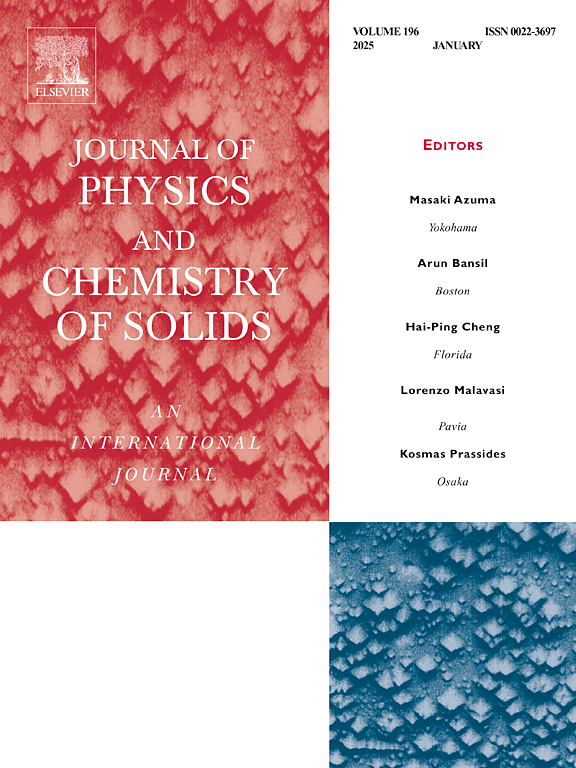Tailoring nickel disulfide for energy applications: A hydrothermal approach to enhanced performance
IF 4.3
3区 材料科学
Q2 CHEMISTRY, MULTIDISCIPLINARY
引用次数: 0
Abstract
This study focused on synthesizing the nickel disulfide (NiS2) with a non-uniform microflower morphology via hydrothermal synthesis for supercapacitor and water-splitting applications. X-ray diffraction, Fourier transform infrared and Raman spectroscopy, Scanning electron microscopy, and Transmission electron microscopy confirmed the crystal structure, presence of various functional groups, stretching/bending vibration present in the prepared NiS2 material, and surface morphology and interatomic illustration of the NiS2 materials. As a result, the prepared materials were utilized for the electrochemical and electrocatalytic measurements using flexible steel mesh as a working electrode in 1 M KOH via a three-electrode cell system. Using a flexible steel mesh electrode, the optimized NiS2 electrode exhibited a specific capacitance of 630 F/g at 5 mA/cm2 with 92 % retention after 5000 cycles. An assembled asymmetric supercapacitor device achieved energy and power densities of 13 Wh/kg and 900 W/kg, respectively, with good cycling stability. For water splitting, the same electrode showed a low overpotential of 140 mV, a Tafel slope of 73 mV/dec, and a high electrochemically active surface area (46.50 cm2). These results demonstrate the potential of NiS2 for dual applications in sustainable energy storage and conversion.

求助全文
约1分钟内获得全文
求助全文
来源期刊
CiteScore
7.80
自引率
2.50%
发文量
605
审稿时长
40 days
期刊介绍:
The Journal of Physics and Chemistry of Solids is a well-established international medium for publication of archival research in condensed matter and materials sciences. Areas of interest broadly include experimental and theoretical research on electronic, magnetic, spectroscopic and structural properties as well as the statistical mechanics and thermodynamics of materials. The focus is on gaining physical and chemical insight into the properties and potential applications of condensed matter systems.
Within the broad scope of the journal, beyond regular contributions, the editors have identified submissions in the following areas of physics and chemistry of solids to be of special current interest to the journal:
Low-dimensional systems
Exotic states of quantum electron matter including topological phases
Energy conversion and storage
Interfaces, nanoparticles and catalysts.

 求助内容:
求助内容: 应助结果提醒方式:
应助结果提醒方式:


